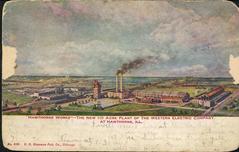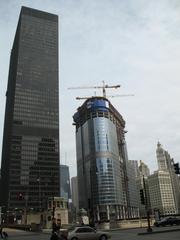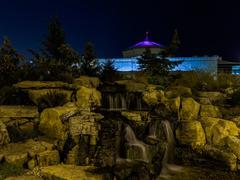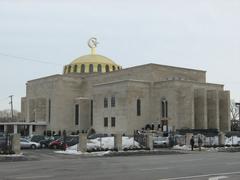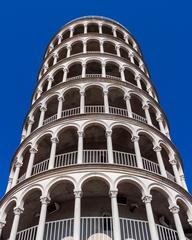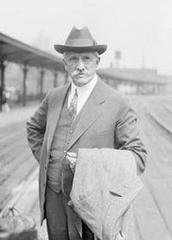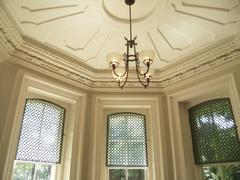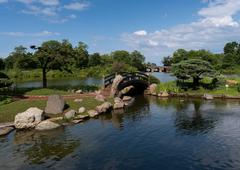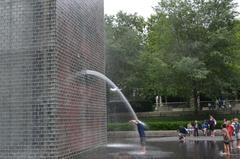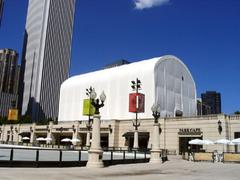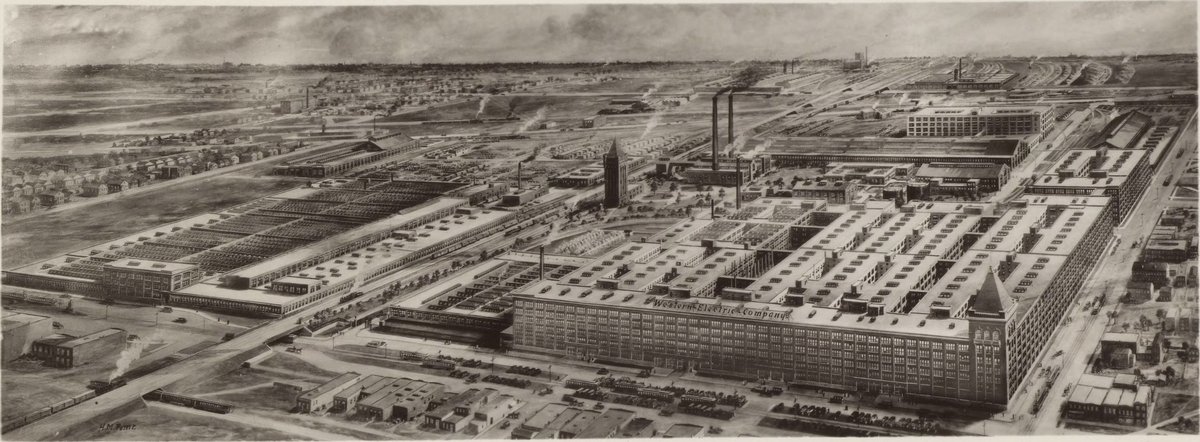
Comprehensive Guide to Visiting Hawthorne Works, Chicago, United States
Date: 18/08/2024
Introduction
Nestled in Cicero, Illinois, a suburb of Chicago, the Hawthorne Works stands as a monumental testament to early 20th-century industrial prowess and innovation. Established in 1905 by the Western Electric Company, the facility quickly grew to become one of the world’s largest manufacturing plants, employing tens of thousands of workers at its peak (Industrial Scenery). The plant’s historical significance is further underscored by its association with the groundbreaking Hawthorne Studies, a series of experiments conducted between 1924 and 1932 that revolutionized the understanding of human behavior in the workplace (My Organisational Behaviour) (Driving Results Through Culture). During World War II, the facility pivoted to producing critical military equipment, cementing its role in the national defense industry (Industrial Scenery). Despite its decline and eventual closure in the 1980s, the legacy of Hawthorne Works lives on through various preservation efforts, including a dedicated museum that houses a rich collection of artifacts and documents (Flower in the River). This guide aims to provide a comprehensive overview of the history, cultural significance, and visitor information for those interested in exploring this iconic site.
Table of Contents
- [Explore the History and Legacy of Hawthorne Works](#explore-the-history-and-legacy-of-hawthorne-worksexplore-the-history-and-legacy-of-hawthorne-works)
- [Establishment and Early Years](#establishment-and-early-yearsestablishment-and-early-years)
- [The Hawthorne Studies](#the-hawthorne-studiesthe-hawthorne-studies)
- [Role During World War II](#role-during-world-war-iirole-during-world-war-ii)
- [Post-War Era and Decline](#post-war-era-and-declinepost-war-era-and-decline)
- [The Eastland Disaster Connection](#the-eastland-disaster-connectionthe-eastland-disaster-connection)
- [Cultural and Community Impact](#cultural-and-community-impactcultural-and-community-impact)
- [Legacy and Preservation](#legacy-and-preservationlegacy-and-preservation)
- [Plan Your Visit to Hawthorne Works](#plan-your-visit-to-hawthorne-worksplan-your-visit-to-hawthorne-works)
- [Ticket Prices and Visiting Hours](#ticket-prices-and-visiting-hoursticket-prices-and-visiting-hours)
- [Guided Tours and Special Events](#guided-tours-and-special-eventsguided-tours-and-special-events)
- [Nearby Attractions](#nearby-attractionsnearby-attractions)
- [Travel Tips](#travel-tipstravel-tips)
- [FAQ](#faqfaq)
- [Conclusion](#conclusionconclusion)
- [References](#referencesreferences)
Explore the History and Legacy of Hawthorne Works
Establishment and Early Years
Hawthorne Works, located in Cicero, Illinois, was established in 1905 by the Western Electric Company. The facility was named after the nearby town of Hawthorne, which was later incorporated into Cicero. Initially, the plant was built to manufacture telephone equipment, but it quickly expanded its operations to include a wide range of electrical products. By the 1920s, Hawthorne Works had become one of the largest manufacturing plants in the world, employing over 40,000 workers at its peak (Industrial Scenery).
The Hawthorne Studies
One of the most significant contributions of Hawthorne Works to industrial history is the Hawthorne Studies, conducted between 1924 and 1932. These studies were led by a team of researchers from Harvard Business School, including Elton Mayo. The initial experiments focused on the relationship between lighting levels and worker productivity. Surprisingly, productivity increased regardless of whether the lighting was increased or decreased, a phenomenon that became known as the “Hawthorne Effect” (My Organisational Behaviour).
Further experiments explored factors such as rest breaks, incentives, and supervisory styles. The researchers concluded that it was not the specific changes themselves that influenced productivity, but rather the attention given to the workers and the social interactions within the workplace. These findings revolutionized the understanding of human behavior in a work setting and continue to shape organizational behavior research today (Driving Results Through Culture).
Role During World War II
During World War II, Hawthorne Works played a crucial role in the war effort. The plant shifted its focus to the production of military equipment, including radar systems, guided missiles, and other advanced technologies. By the end of the war, the Chicago area, including Hawthorne Works, had produced 1,242,000 of the 10,000,000 radio receivers manufactured in the United States. This significant contribution underscored the plant’s importance in the national defense industry (Industrial Scenery).
Post-War Era and Decline
After World War II, Hawthorne Works continued to be a major employer in the Chicago area, but the plant’s fortunes began to decline in the 1960s and 1970s. Advances in technology and changes in the telecommunications industry led to a decrease in demand for the products manufactured at Hawthorne Works. Additionally, the rise of global competition and the shift of manufacturing jobs to other countries further contributed to the plant’s decline.
By the early 1980s, Western Electric had significantly reduced its operations at Hawthorne Works, and the plant was eventually closed in 1983. The closure marked the end of an era for the Cicero community, which had been closely tied to the plant for nearly 80 years (Flower in the River).
The Eastland Disaster Connection
Hawthorne Works is also historically linked to the Eastland disaster, one of the deadliest maritime disasters in American history. On July 24, 1915, the SS Eastland, a passenger ship chartered for a company picnic by Western Electric, capsized in the Chicago River, resulting in the deaths of over 800 people. Many of the victims were employees of Hawthorne Works and their families. The disaster had a profound impact on the Cicero community, as nearly everyone knew someone who had been affected (Flower in the River).
Cultural and Community Impact
Hawthorne Works was more than just a place of employment; it was the lifeblood of the Cicero community. Many employees lived in company housing or nearby neighborhoods, creating a close-knit environment where everyone knew each other. Family and community were central to their lives, and there was a strong emphasis on maintaining cultural traditions, celebrating holidays, and supporting one another. Religious organizations, social clubs, and ethnic organizations played crucial roles in maintaining cultural identities and providing stability and support networks (Flower in the River).
Legacy and Preservation
Today, the legacy of Hawthorne Works is preserved through various efforts, including the Hawthorne Works Museum and Archives. The museum, located in Cicero, houses a collection of artifacts, photographs, and documents that chronicle the history of the plant and its impact on the community. Visitors can explore exhibits that highlight the technological innovations developed at Hawthorne Works, as well as the stories of the people who worked there (Industrial Scenery).
Plan Your Visit to Hawthorne Works
Ticket Prices and Visiting Hours
The Hawthorne Works Museum is open to the public and offers free admission. It is located at Morton College, 3801 S. Central Ave., Cicero, Illinois. The museum is open from Monday to Friday, 9 AM to 5 PM. Please check their official website or contact the museum directly for any updates on visiting hours or special closures.
Guided Tours and Special Events
Guided tours are available and offer an in-depth look into the industrial history of Cicero and the significant contributions of the Hawthorne Works. The museum occasionally hosts special events and exhibitions, so it’s worth checking their schedule in advance.
Nearby Attractions
While in Cicero, consider visiting other historical sites such as the Cicero Historical Society and the Chicagoland Speedway for a blend of history and excitement. There are also various dining and shopping options nearby for a complete day out.
Travel Tips
Cicero is easily accessible by car and public transportation. Ample parking is available at Morton College. For those using public transit, several bus routes service the area. Make sure to bring a camera as there are plenty of photographic spots both at the museum and around the remaining historical structures.
FAQ
Q: What are the visiting hours for Hawthorne Works Museum?
A: The visiting hours vary, so it’s best to check the museum’s official website for the most up-to-date information.
Q: How much are the tickets to visit Hawthorne Works Museum?
A: Ticket prices can vary based on special exhibits and tours. Check the museum’s website for current pricing.
Q: Is the museum accessible for people with disabilities?
A: Yes, the museum is committed to accessibility. Please contact them in advance if you have specific needs.
Q: Are there any special events or guided tours available?
A: Yes, the museum frequently hosts special events and guided tours. Check their website for a schedule of upcoming events.
Conclusion
The Hawthorne Works remains an indelible part of Cicero’s industrial heritage and American history at large. From its early years of manufacturing telephone equipment to its pivotal role during World War II, the plant was a cornerstone of industrial innovation and community life. The groundbreaking Hawthorne Studies conducted at the facility continue to influence organizational behavior and management practices to this day. Although the factory closed its doors in 1983, its legacy is preserved through the Hawthorne Works Museum, providing visitors with a window into the past and the technological advancements that took place there (Chicagoland Muse and Views). As you plan your visit, take the opportunity to delve into the rich history and cultural impact of this iconic site, ensuring a memorable and educational experience. For more information and updates, be sure to follow the museum’s official channels or download our mobile app Audiala.

